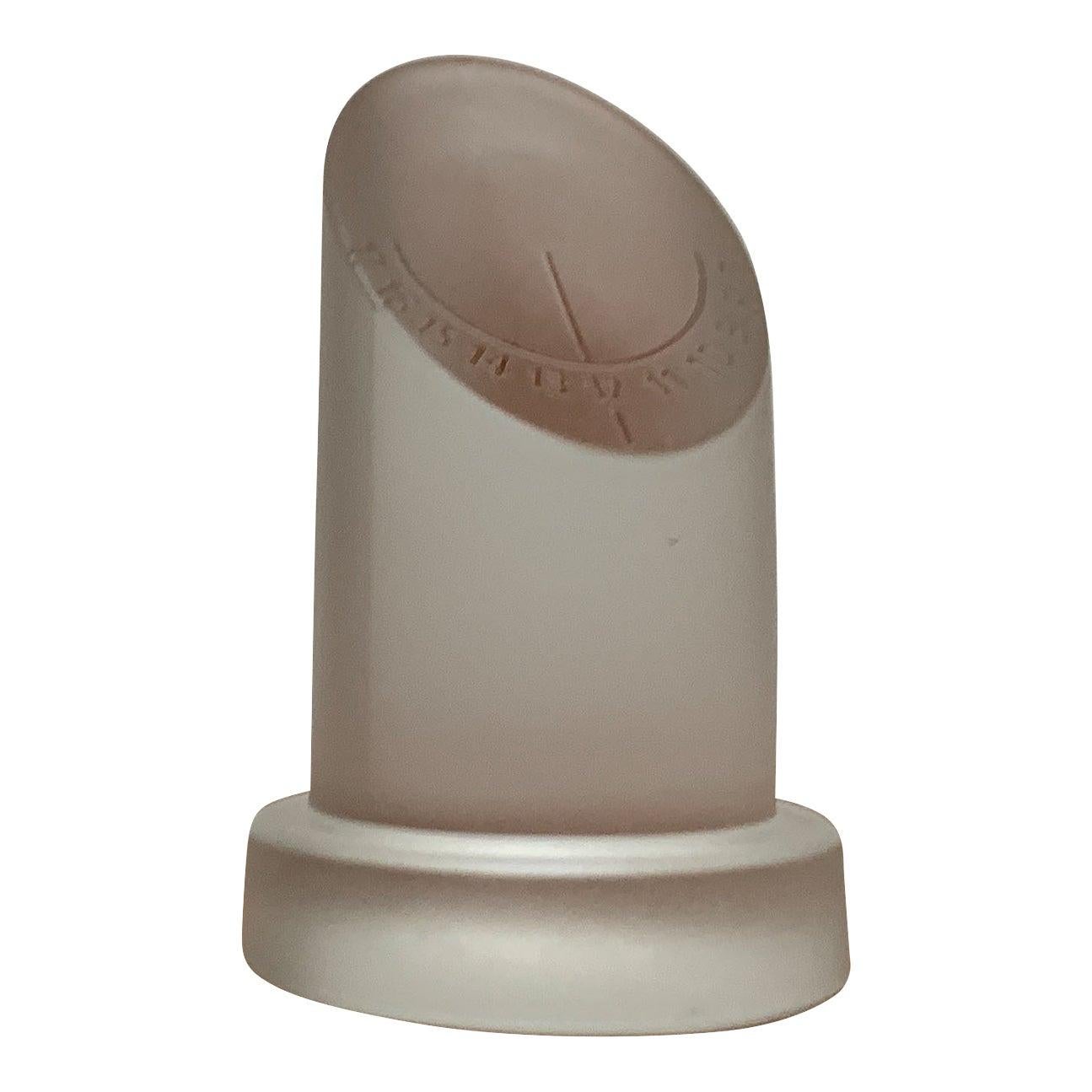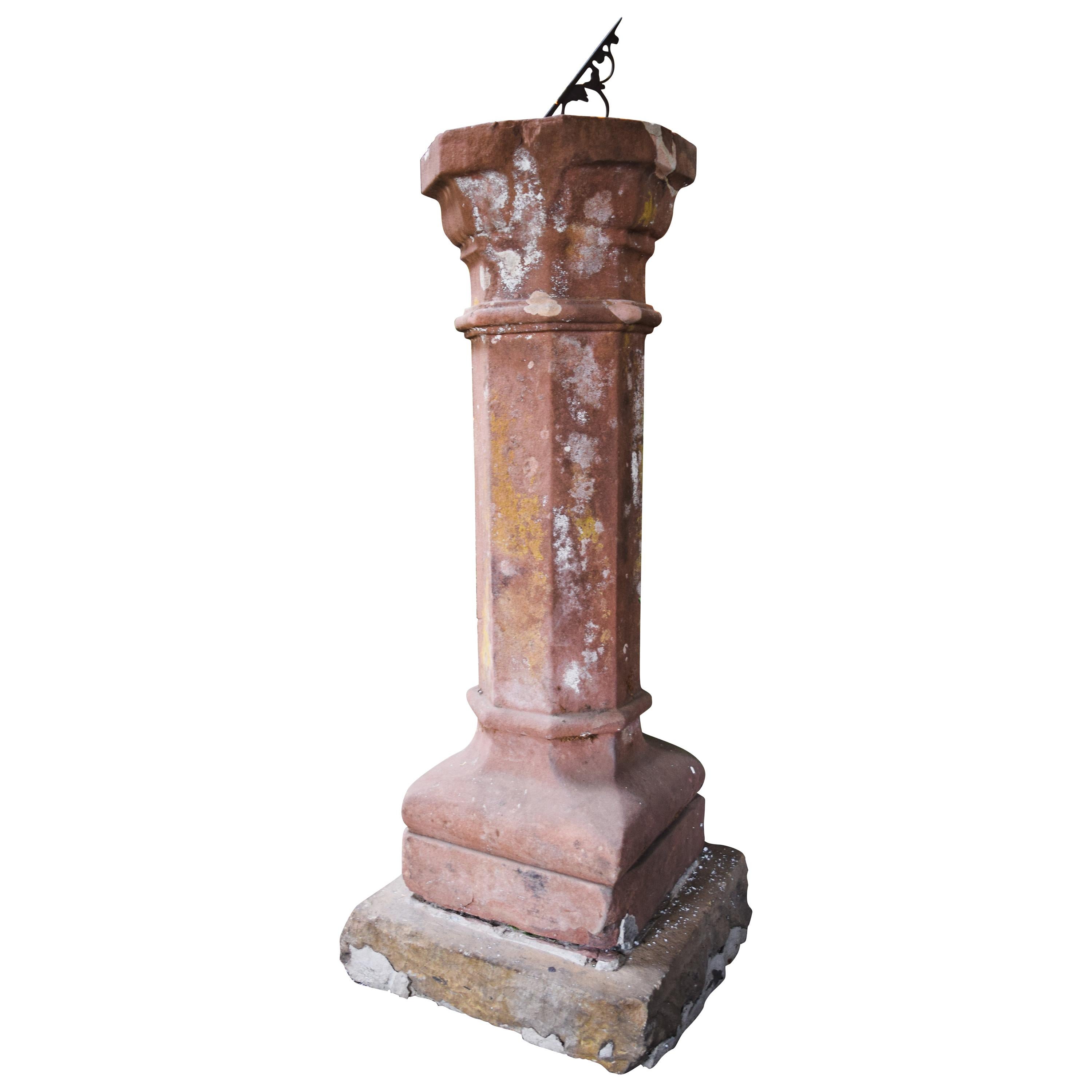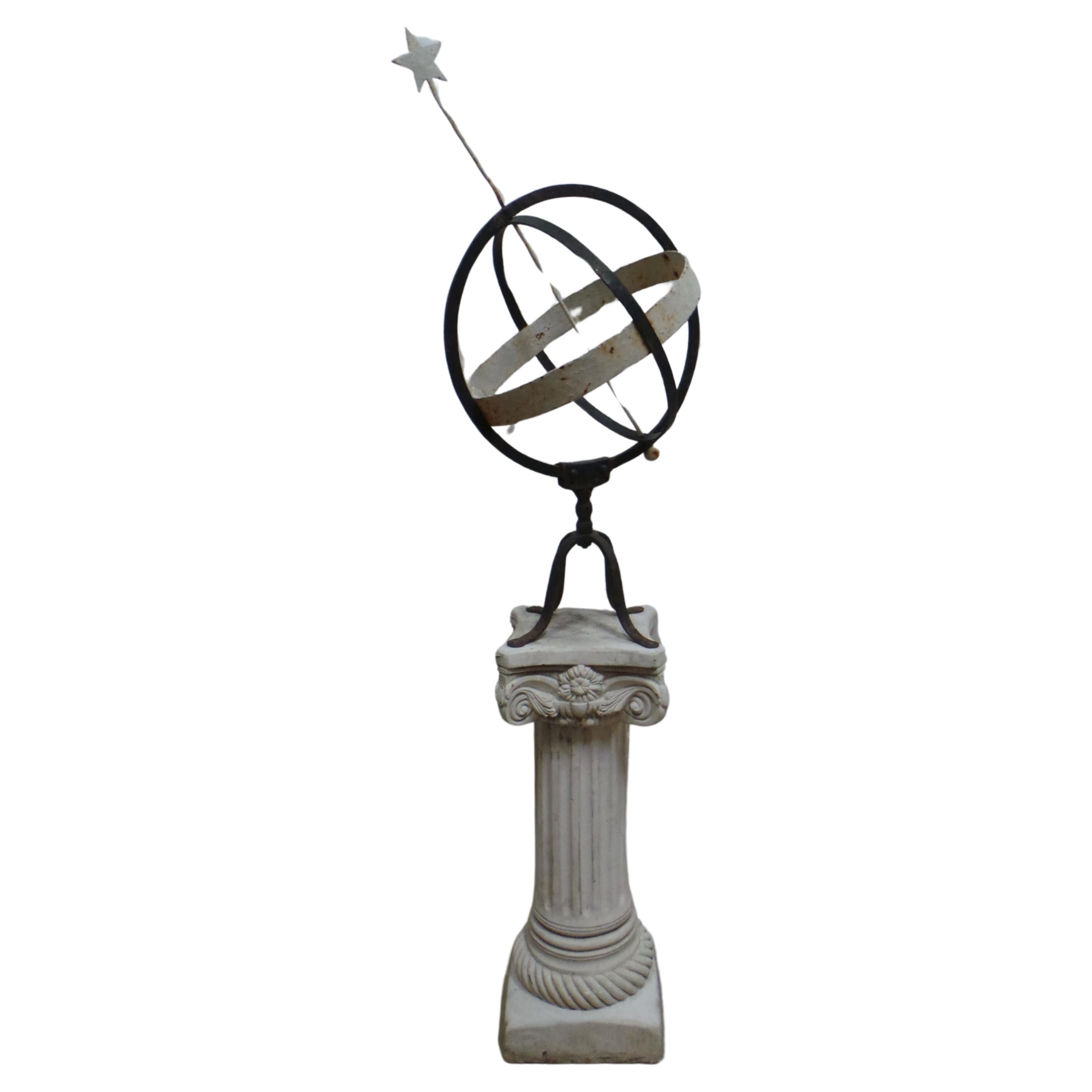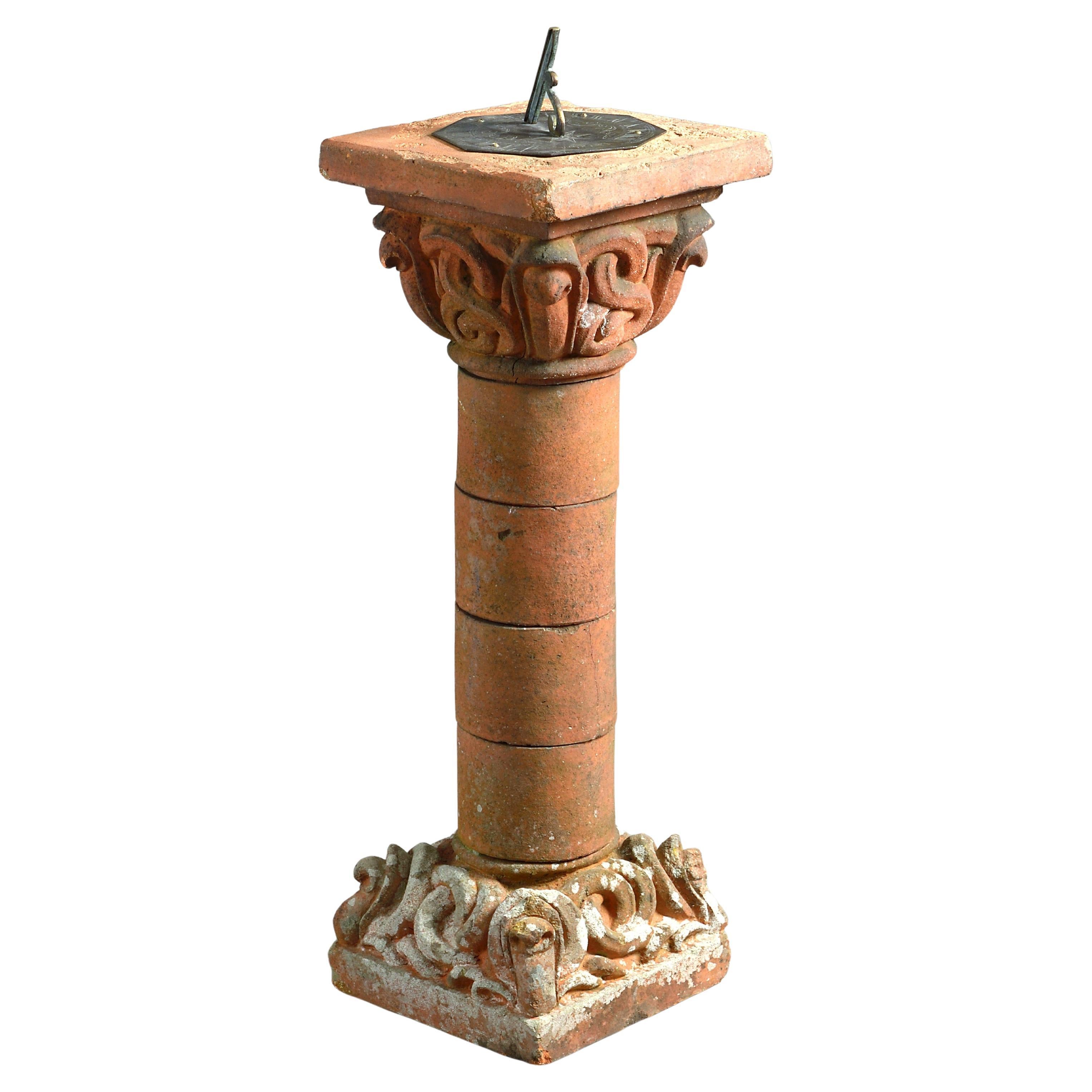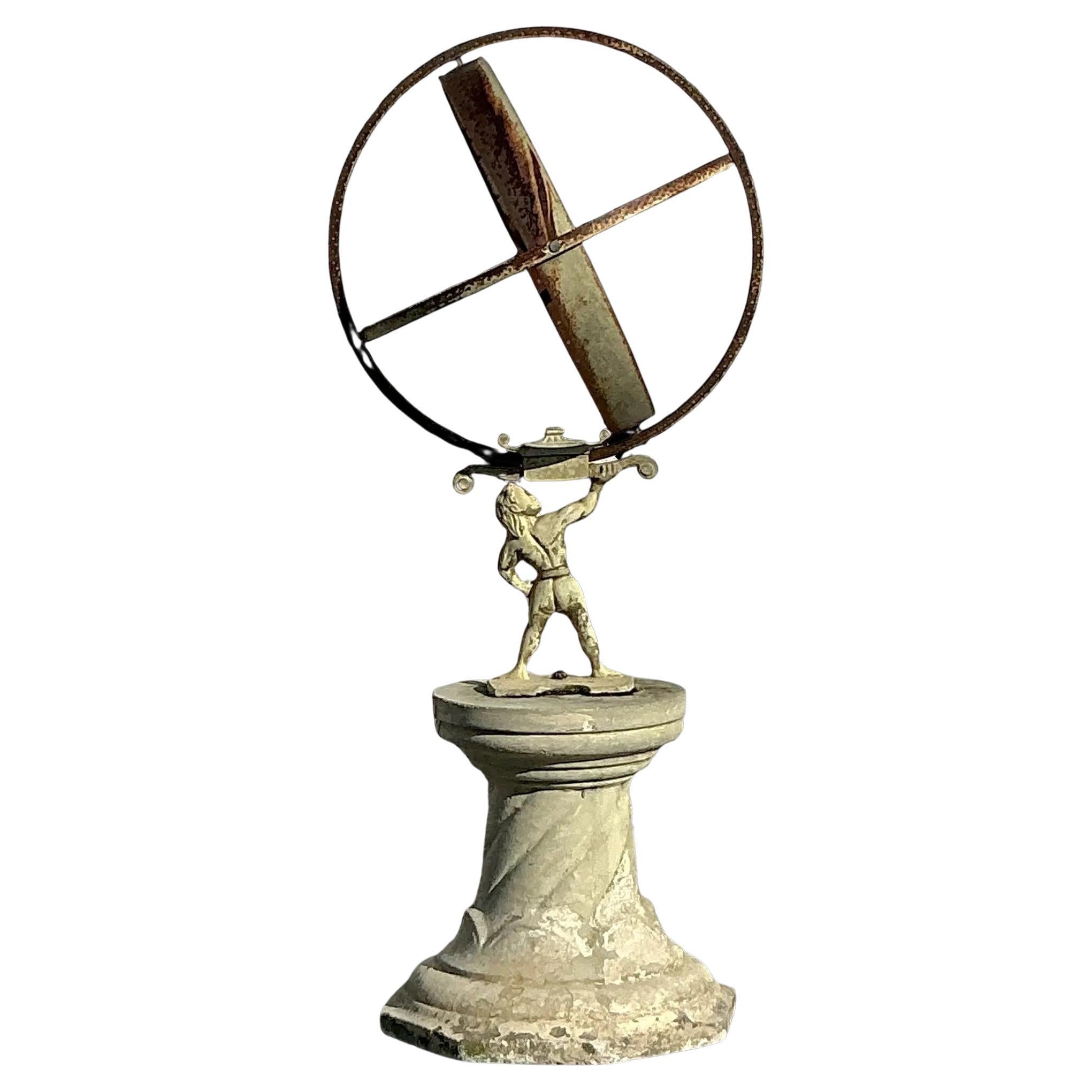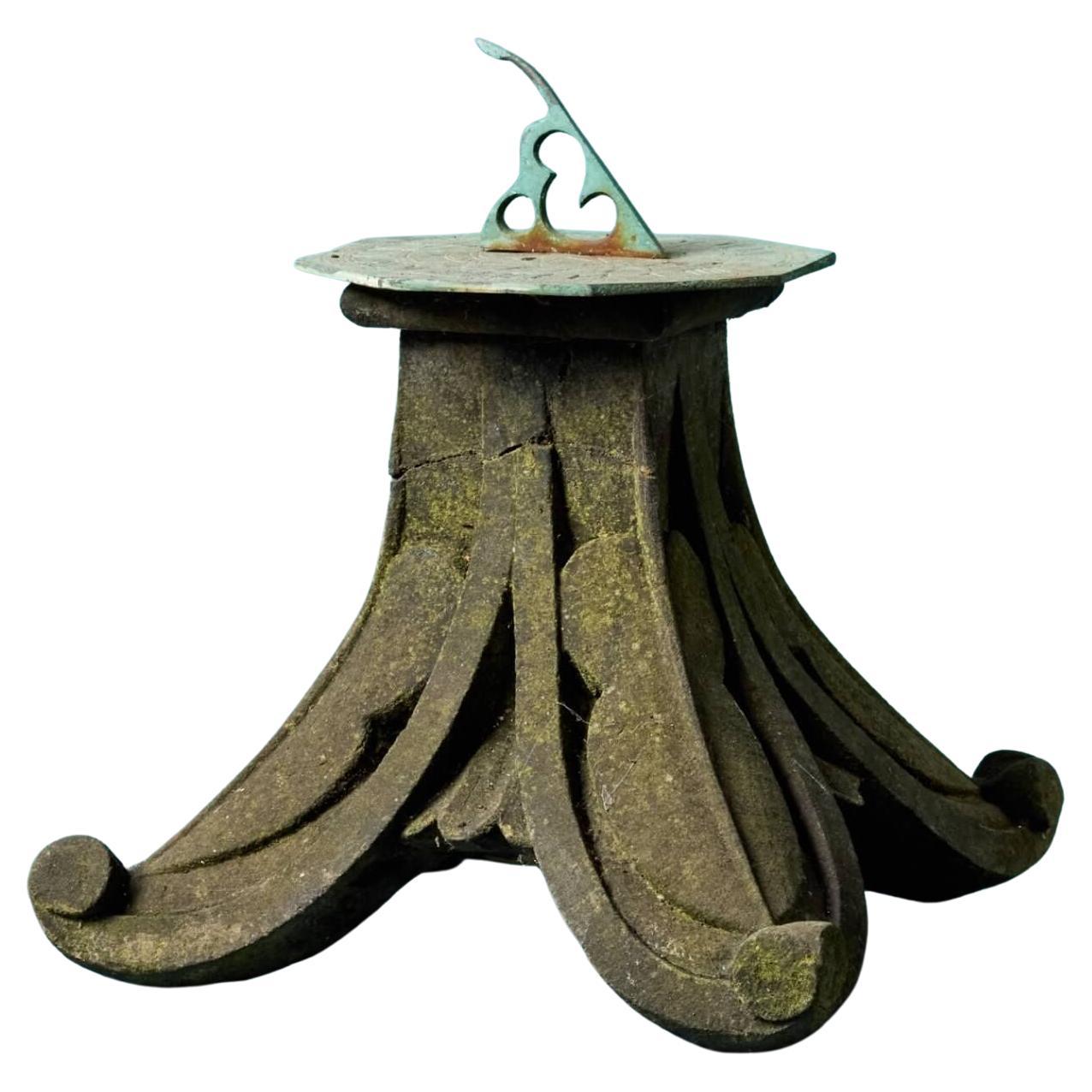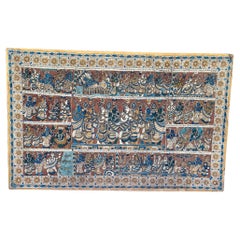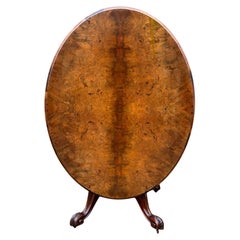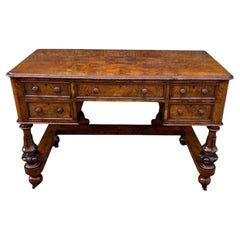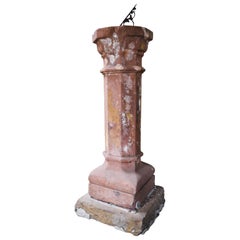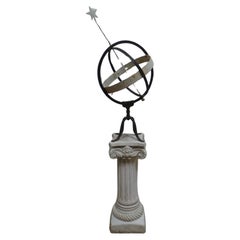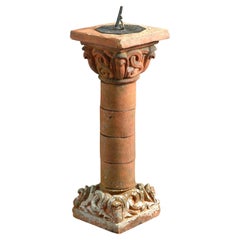Items Similar to Crimean War Sundial from Kinburn Fort
Video Loading
Want more images or videos?
Request additional images or videos from the seller
1 of 13
Crimean War Sundial from Kinburn Fort
$47,899.66
£35,000
€41,673.61
CA$65,935.65
A$74,805.43
CHF 39,170.71
MX$922,898.85
NOK 485,708.73
SEK 464,730.07
DKK 310,846.04
Shipping
Retrieving quote...The 1stDibs Promise:
Authenticity Guarantee,
Money-Back Guarantee,
24-Hour Cancellation
About the Item
This horizontal sundial & stone pillar, an extraordinary artifact of the Crimean War, originated from the 10-Gun Battery at Kinburn Fortress. As the inscription reveals, the sundial was taken following capture of Kinburn Fort, the first Allied occupation of Russian territory in the War of 1854–55, and was likely removed in the days immediately following the battle.
This sundial represents one of the last privately held artefacts & parts from the Kinburn Fortress, which remained under Allied control for the following year before being abandoned. The fortress, destroyed after the battle, has become a site of both historical and contemporary significance, now lying within a contested area in the ongoing Russia-Ukraine conflict.
Kinburn Fortress:
The Kinburn Fortress was located on the Kinburn Spit, a long low-lying sandy spit, at the extreme western end of the Kinburn Peninsula, at the entrance of Dnieper River. It comprised three separate fortifications:
The primary fort, a stone-built, square structure with bastions, mounted 50 guns. Some of these were installed in protective casemates, while others were mounted en barbette, firing over the parapets.
Two earthwork batteries, located west of the fort further down the spit, which mounted from reports between (10-12) and (11-20) guns.
The fortress was destroyed and burned down following the battle. Today, only ruins and a memorial statue remains at the site, which is now a contested area in the current Russia-Ukraine war.
Battle of Kinburn (1855)
The Battle of Kinburn was one of the final campaigns of the Crimean War in the black sea. Taking place on the 17th of October 1855, it was a combined land-naval operation that marked the first successful use of ironclad warships in combat. French and British forces, supported by an Anglo-French fleet, decisively bombarded and overwhelmed the fortress in just three hours.
This engagement marked the first capture of Russian territory by the Allies during the war. With the fortress under Allied occupation for the following year, the sundial—marked "Taken from a 10-Gun Battery"—was likely removed by British forces in the immediate aftermath of the battle.
Provenance & Inscriptions:
This sundial has been part of a private collection for over 50 years, the current owner acquired it at a house auction in the West Suffolk village of Brandon in the 1970s, in an overgrown garden. Mounted on a stone column, the sundial features two distinct inscriptions:
Side 1: Historical Context
"Taken from a 10-Gun Battery on Kilbouroun Spit at the Entrance of the Dnieper, captured by the English and the French in October 1855: Being the First Fort and Portion of Territory Taken by the Allied Forces in the War of 1854-55."
This inscription commemorates the Allied forces’ first occupation of Russian-held territory during the war and states that this war relic was taken specifically from the 10 Gun Earthwork Battery.
Side 2: Sundial Motto
"I mark not the hours unless they are bright,
I mark not the hours of darkness and night,
My promise is solely to follow the sun,
And point out the course his chariot doth run."
Side 3 – Latin Inscription
The sundial also features the Latin inscription: "Non Numero Horas Nisi Serenas"
This translates to “I do not count the hours unless they are clear.”
The Sundial
A horizontal sundial, with roman numerals from 6 am to 6 pm, made from slate. With two Cyrillic inscriptions, И – ‘I’ and Б - ‘be’, are believed to be the inscriptions of a maker.
Sundials in Fortresses
Before the advent of accurate mechanical clocks in the 19th century, sundials were a reliable method of timekeeping, particularly in outdoor settings such as fortresses. They were essential for maintaining strict schedules for guard rotations, drills, and artillery operations. Their durability made them ideal for withstanding harsh outdoor conditions without mechanical upkeep. In coastal fortifications like Kinburn, sundials occasionally played a secondary role in navigation and astronomical observations, aiding in understanding tides and daylight hours.
Included is documents and plans for the Kinburn fortress and battery designs, all from the national archives.
- Dimensions:Height: 53.27 in (135.3 cm)Width: 23.43 in (59.5 cm)Depth: 23.43 in (59.5 cm)
- Materials and Techniques:
- Place of Origin:Ukraine
- Period:
- Date of Manufacture:Unknown
- Condition:Wear consistent with age and use.
- Seller Location:King's Lynn, GB
- Reference Number:1stDibs: LU10441244918752
About the Seller
New to 1stDibs
Joined in the past six months.
No Reviews Yet
Vetted Professional Seller
Every seller passes strict standards for authenticity and reliability
Established in 2024
1stDibs seller since 2025
Typical response time: <1 hour
- ShippingRetrieving quote...Shipping from: King's Lynn, United Kingdom
- Return Policy
Authenticity Guarantee
In the unlikely event there’s an issue with an item’s authenticity, contact us within 1 year for a full refund. DetailsMoney-Back Guarantee
If your item is not as described, is damaged in transit, or does not arrive, contact us within 7 days for a full refund. Details24-Hour Cancellation
You have a 24-hour grace period in which to reconsider your purchase, with no questions asked.Vetted Professional Sellers
Our world-class sellers must adhere to strict standards for service and quality, maintaining the integrity of our listings.Price-Match Guarantee
If you find that a seller listed the same item for a lower price elsewhere, we’ll match it.Trusted Global Delivery
Our best-in-class carrier network provides specialized shipping options worldwide, including custom delivery.More From This Seller
View AllKalamkari Temple Painting from South India (1)
Located in King's Lynn, GB
A Kalamkari Temple Painting from South India depicting a Hindu story, circa 1900-1920. This hand-drawn, all-natural hand-dyed textile was a traditional artwork of the temple town of ...
Category
Early 20th Century Indian Textiles
Materials
Textile, Paint
Kalamkari Temple Painting from South India (2)
Located in King's Lynn, GB
A Kalamkari Temple Painting from South India depicting a Hindu story, circa 1900-1920. This hand-drawn, all-natural hand-dyed textile was a traditional artwork of the temple town of ...
Category
Early 20th Century Indian Textiles
Materials
Textile
Victorian Burr Walnut Loo Table
Located in King's Lynn, GB
Here we have beautiful antique Victorian burr walnut loo table. Loo tables have a tilting top which allows a top to be unclicked and tilted vertical, making them easy to put put up a...
Category
Antique 19th Century British Victorian Tables
Materials
Walnut
Victorian Burr Walnut Desk
Located in King's Lynn, GB
Here we have an Antique Victorian (1837-1901) Burr Walnut Desk with a quarter veneered burr walnut top, carved front legs, 5 drawers, all with wooden knob handles and casters (wheels...
Category
Antique 19th Century British Victorian Desks
Materials
Walnut
Georgian Mahogany Inlaid Bureau
Located in King's Lynn, GB
Here we have a beautiful Georgian (1714-1820) mahogany bureau. The top opens to reveal a fitted interior with a blue baize writing surface, pigeon holes, drawers and a hidden drawer ...
Category
Antique 18th Century British Georgian Desks
Materials
Mahogany
Victorian Ebonised & Boulle Breakfront Credenza
Located in King's Lynn, GB
A Large Victorian Ebonised & Boulle Breakfront Credenza. A beautiful blend of boulle & brass ormolu decoration. With 4 glazed panelled and boulle inlaid doors, opening to reveal a pa...
Category
Antique Late 19th Century British Credenzas
Materials
Brass
You May Also Like
Postmodern Glass Sundial from Royal Leerdam Crystal
Located in Hamburg, DE
Postmodern Glass Sundial from Royal Leerdam Crystal, in None conditions. Designed 1980 to 1989.
Additional information:
Materials: Glass
Styles: Postmodern
Item Type: Vintage, Antiq...
Category
20th Century Post-Modern Sundials
Materials
Glass
Scottish Sundial
Located in Bloomfield Hills, MI
An eternally functioning timepiece, this 19th century Scottish sundial adds a bold statement to every environment. Atop a grand sandstone pillar, thi...
Category
Antique 19th Century Scottish Sundials
Materials
Sandstone
$10,175
Antique Swedish Sundial
Located in Hollywood, FL
This is a Antique Swedish Sundial in original condition.
Category
Vintage 1910s Swedish Primitive Sundials
Materials
Concrete, Metal
$1,895
Compton Pottery Terracotta Sundial
Located in London, GB
A fine Compton Pottery terracotta sundial with original bronze gnomon, circa 1900.
Category
Antique Early 1900s Sundials
Materials
Terracotta
Vintage Regency Patinated Sundial
Located in west palm beach, FL
This stunning Vintage Regency patinated sundial showcases classic design elements with an elegant aged patina. Crafted in metal, it features intricate detailing that reflects the sop...
Category
Mid-20th Century American Regency Sundials
Materials
Concrete, Metal
$1,160 Sale Price
20% Off
Tabletop Antique Garden Sundial
Located in Wormelow, Herefordshire
Dating from the early 20th century, this small tabletop antique garden sundial sees a stylistically carved York stone base below a later horizon...
Category
Antique Late 19th Century English Victorian Sundials
Materials
Stone, Bronze
